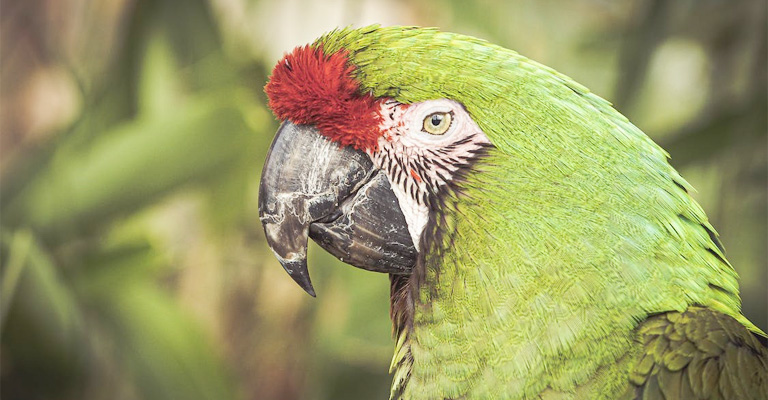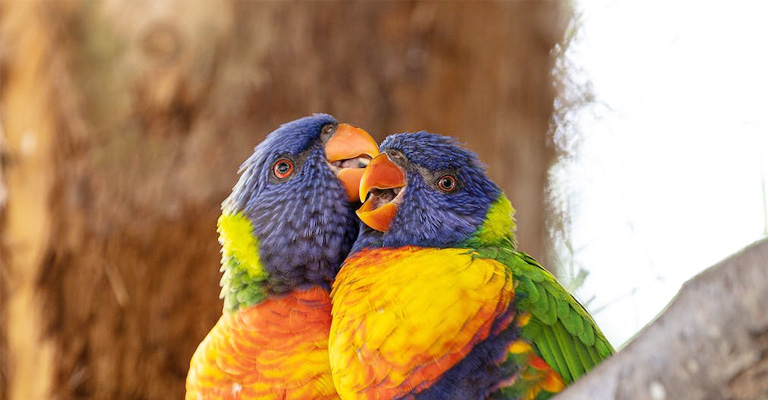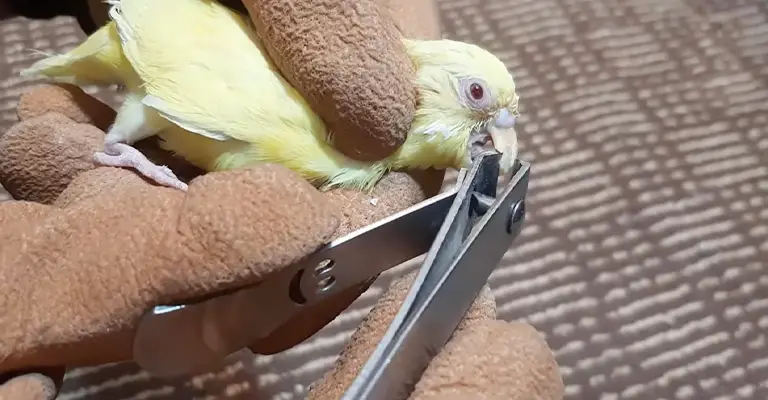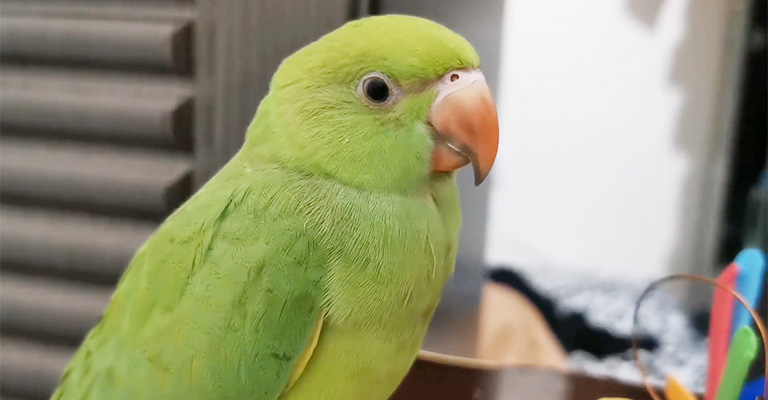Beak grinding, also known as mandibular grinding, is a common behavior observed in pet birds, such as parrots, cockatiels, and lovebirds.
This behavior involves the bird making a grinding or gnashing noise with its beak, accompanied by a slight movement of the lower jaw.
This intriguing behavior involves the rhythmic rubbing of their upper and lower beaks together, serving a vital purpose in the maintenance and preservation of their beaks.
exploring the fascinating phenomenon of beak grinding, we can gain insights into the unique adaptations and behaviors of these feathered creatures.
However, this article is all about this fact. So, if your birds grind their beaks so often, check these essentials information to learn how to treat them at that time.

Reasons for Beak Grinding
Usually, there can be different reasons, your birds can grind their beak. You need to learn about the causes first so that you can identify the specific reasons easily. Well, here are the common reasons.
Relaxation and Contentment
Beak grinding in birds is a common behavior observed before sleep, which signifies relaxation and contentment.
It is similar to a cat’s purring, indicating that the bird is comfortable, safe, and at ease in its environment. This behavior reflects the bird’s state of happiness and tranquility, mirroring the purpose of a cat’s purring.
Aggression

Beak grinding in birds can also serve as a warning sign, indicating aggression and territorial behavior. However, it is essential to consider the context in which the behavior occurs.
If the bird is grinding its beak near other animals, it may be displaying aggression. On the other hand, if the bird is grinding its beak while alone or in the presence of its owner, it is more likely an expression of contentment.
Hygiene
Beak grinding in birds serves as a natural cleaning and maintenance mechanism for their beaks. A beak is vital for various activities such as eating, grooming, and communication. By grinding their beaks, birds remove debris and keep their beaks in optimal condition.
Maintaining a healthy beak is crucial for a bird’s overall well-being, as any issues with the beak can hinder essential functions. Beak grinding plays an important role in their daily routine to ensure a functional and healthy beak.
Happiness
Happiness is a subjective state of well-being and contentment. It is often characterized by positive emotions, such as joy, satisfaction, and fulfillment.
Usually, happiness can arise from various sources, including personal relationships, achievements, experiences, and a sense of purpose.
It is a desirable state that contributes to overall mental and emotional well-being. While happiness is subjective and can vary from person to person, it is generally associated with positive feelings and a sense of satisfaction with one’s life.
Beak Trimming

Beak trimming is a practice performed on certain bird species, particularly poultry, to modify or shorten their beaks.
It is typically done for management purposes, such as preventing feather pecking, cannibalism, and injuries caused by aggressive behaviors in crowded or stressful environments.
Beak trimming can involve various methods, including hot-blade trimming, infrared trimming, or beak tipping.
However, it is important to note that beak trimming is a controversial topic, as it can cause pain and affect the natural behavior and well-being of birds.
Alternative methods, such as environmental enrichment and improved husbandry practices, are being promoted as more humane approaches to address the underlying issues.
Is Beak Grinding Good?
Beak grinding in birds can be considered normal and positive behavior in certain contexts. When birds grind their beaks as a sign of relaxation and contentment, it indicates that they feel safe, secure, and comfortable in their environment.
This behavior is comparable to a cat’s purring, reflecting a state of happiness and tranquility. Additionally, beak grinding can serve as a means of cleaning and maintaining the health of a bird’s beak, which is essential for its overall well-being.
However, it’s important to consider the context and understand any potential warning signs or aggressive behavior associated with beak grinding.
How Do You Help a Bird’s Grinding Beak?

Now you must be thinking about if there is any way you can help your bird when it is grinding it’s beak. Here Are a Few General Tips to Support a Bird’s Beak Health:
Provide a Balanced Diet
Ensure your bird’s diet includes a variety of foods that promote beak health, such as fresh fruits, vegetables, and a high-quality pellet or seed mix recommended for your bird species. Consult a veterinarian or avian nutritionist for specific dietary recommendations.
Offer Chew Toys and Foraging Opportunities
Providing appropriate chew toys and foraging activities can help keep the beak naturally worn down and stimulated. These can include bird-safe branches, wooden toys, or puzzle toys that encourage active beak engagement.
Maintain Proper Humidity Levels
Some species of birds require adequate humidity to keep their beaks moisturized. Consult species-specific care guides or a veterinarian to ensure you are maintaining the appropriate humidity levels in your bird’s environment.
Regular Beak Inspections
Routinely check your bird’s beak for any signs of abnormal growth, cracks, or other issues. If you notice any abnormalities, consult a veterinarian promptly for further evaluation.
Remember, each bird is unique, and their beak health and maintenance may vary depending on the species and individual needs. Always seek professional advice for personalized guidance to support your bird’s well-being.
Common Bird Species That Grind Their Beaks
As you know, grinding beaks is not abnormal for all types of birds. For some species, it is a common phenomenon. So, if your bird is from any of the following species, you can be relax thinking it is normal.
Cockatiels
Cockatiels are one of the most common pet birds and are known for their gentle and affectionate nature. They are also known for their beak-grinding behavior, which is often observed just before they fall asleep. This behavior is a sign of contentment and relaxation in cockatiels and is a common behavior in healthy cockatiels.
Lovebirds
Lovebirds are another popular pet bird species and are known for their playful and social nature. They too have a tendency to grind their beaks as a sign of contentment and relaxation, particularly when they are sleeping or feeling safe and secure.
Lorikeets
Lorikeets are a group of parrots that are known for their brightly colored plumage and active nature. They also are known to grind their beaks, particularly when they are feeling relaxed and content.
Other Species
Beak grinding is a common behavior in many other bird species as well, including parrots, finches, canaries, and many others.
It is important to note that the frequency and intensity of beak grinding can vary between species and individuals and is not always an indicator of the bird’s overall health or well-being.
In general, beak grinding is a normal behavior for many birds and is a sign of contentment and relaxation.
It is important to understand the context in which the behavior is occurring and to consult with a veterinarian if the behavior is excessive or if there are any concerns about the bird’s health or well-being.
FAQs
Beak grinding is considered normal in birds and can vary depending on the individual bird and its species. Some birds may grind their beaks frequently, while others may do it less often. It is considered normal as long as it is not excessive and not accompanied by other signs of distress or illness.
Beak grinding alone is not typically a sign of pain or discomfort in birds. However, if a bird is also showing other signs of distress or illness, such as lethargy, weight loss, or abnormal behavior, it is important to consult with a veterinarian to rule out any underlying health issues.
Beak grinding is a natural behavior for many birds and it is not necessary to stop it. However, suppose the behavior is excessive or accompanied by other signs of distress or illness. In that case, it is important to consult with a veterinarian to determine the underlying cause and develop an appropriate course of action.
If the beak grinding is keeping you awake at night, you can try to provide a separate sleeping area for your bird that is quiet and dimly lit. This can help to encourage your bird to sleep and reduce the amount of beak grinding that occurs during the night. Additionally, it’s important to consult with a veterinarian to rule out any underlying health issues that may be causing the excessive beak grinding.
Beak grinding alone is not typically a sign of malnutrition in birds. However, if a bird is not getting the proper nutrients, it may develop beak and feather abnormalities. It’s important to provide a balanced diet and to consult with a veterinarian if you suspect your bird may be malnourished.
Conclusion
Beak grinding is a common behavior observed in pet birds, serving as a sign of contentment and relaxation. However, it is important to consider the context and potential signs of aggression associated with this behavior.
This specific behavior of the birds simply showcases the remarkable adaptability and self-care abilities of birds, highlighting their intricate evolutionary traits.
So, you don’t need to think much about it and hopefully, it won’t cause a lot of problems. Thank you for reading this content.